The best Aniseed essential oil aroma of them all, fresher, smoother and more intense, good for calming, relaxing, grounding,also masks bad smells.
Anise Myrtle Essential Oil
Price range: $18.70 through $575.00
Description
Anise Myrtle Essential Oil (Aniseed Myrtle Oil)
Our Anise Myrtle essential oil is clearly superior to any of the other traditional aniseed essential oils. Anise Myrtle is far fresher, a little stronger and purer in its Aniseed aroma than regular Aniseed essential oils.
The Anise Myrtle is simply the best Aniseed-type essential oil in the world. (We have conducted focus groups on traditional exotic Aniseed and Anise and convincingly found the native Anise Myrtle to be the preferred oil!)
Botanical name Syzygium anisatum (previously Backhousia anisata)
Ingredients 100% v/v pure Anise Myrtle essential oil (Aniseed Myrtle oil).
Please take a look at our Anise Myrtle essential oil video
Anise Myrtle Essential Oil (Aniseed Myrtle Oil) Aroma
Licorice, aniseed, fresher and more pleasant than traditional anise and aniseed. Pleasant for men, women and especially children, especially if they like licorice sweets!
Anise Myrtle Essential Oil (Aniseed Myrtle Oil) Benefits
Good for relaxing. Relaxing in the bedroom at night, air freshening, grounding and calming. Masks other scents, bad flavours and bad smells.
Anise Myrtle Essential Oil (Aniseed Myrtle Oil) Uses
In an oil burner, vaporiser, potpourri, massage oil, bath. Add a few drops to a diffuser to mask a bad smells. Use in washing products to eradicate or mask bad smells. Use in cleaning animal kennels and blankets. Anise Myrtle oil also attracts fish to fish lures.
MORE INFO on ANISE MYRTLE ESSENTIAL OIL (ANISEED MYRTLE OIL)
Directions and More Uses
Aromatherapy Oil
2 to 4 drops in an oil burner, a couple of drops in a vaporiser, 1 to 2 drops into a bath.
Massage with Anise Myrtle Essential Oil
1 drop per 20ml of carrier oil (Anise Myrtle oil can cause skin sensitisation).
Mix Anise Myrtle Oil into
Soaps, washing liquids at 0.5% to 1%
Anise Myrtle Oil for Food Flavouring
Anise Myrtle essential oil is used as a flavouring ingredient. As a starting point, try mixing at 0.1%. Use as an alternative to other Anise oils, Anise Myrtle has a more full bodied, fresh Anise flavour than other Anise essential oils.
It has the ability to mask unpleasant odours from other foods and can also used in perfumes and cosmetics.
Key Chemical Constituents of Anise Myrtle Essential Oil
Trans-anethole is equal to or greater than what is found in traditional Aniseed or Star Anise.
Precautions
Do not use during pregnancy.
Anethole can be a dermal irritant.
Keep out of reach of children.
Store away from direct sunlight.
Store below 30 degrees.

Anise Myrtle essential oil plant in flower, Byron Bay
Other Common Names
Aniseed Myrtle, Ringwood.
Previous Botanical Names
Backhousia anisata, Anethola anisata.
Natural Occurrence in Australia
A rainforest tree to 40 metres, it is very rare in the wild and limited to the Bellinger and Nambucca Valleys of northern New South Wales.
Characteristics of Anise Myrtle Essential Oil
Watery, strong, with a pleasant licorice or anise aroma.
Extraction and Farming Method of Anise Myrtle Essential Oil
Anise Myrtle essential oil is extracted via steam distillation of the stems and branches. Anise Myrtle is grown in plantations around northern New South Wales, these plantations were actually planted for the herb or bush tucker markets until the ‘rediscovery’ of its unique essential oil.
The trees are harvested and are then steam distilled for around 1 hour. The harvesting is done by unique farm machinery designed by the farmers themselves, leaves are ‘pruned’ like a hedge, a vacuum sucks the leaves into a bin and the leaves are placed into stainless steel boiler.
History – Anise Myrtle essential oil
Traditional Usage
Little knowledge of traditional use is available, mainly because the tree is so rare and the traditional knowledge in this area has been largely lost.
Early European Usage
The trees were briefly harvested during World War 2 as a substitute for aniseed flavouring which was in short supply.
Present Day Usage
Bush Tucker pioneers Peter Hardwick and later Sibylla Hess-Buschmann, rediscovered the plant and began selecting superior genetic varieties, then established small plantations in northern New South Wales. Anise Myrtle essential oil as a product was developed after the herb was re-established.
The Anise Myrtle herb or leaf has been demonstrated by the Australian Government’s research department, RIRDC (Rural Industries and Research Development Corporation), to have antioxidants levels 5 times greater than blueberries. It is also several times higher in Lutein, Magnesium, Calcium, Manganese and Vitamin E compared to blueberries.
Anise Myrtle is a new oil to the aromatherapy industry. It has the potential to supersede traditional Aniseed essential oils on the basis of a superior anethole content and a superior, fresher Anise aroma.
Blend Anise Myrtle Essential Oil with
Essentially Australia oils: Eucalypts, Niaouli, Tea Tree
Other Oils: Cardamon, Caraway, Cedarwood, Coriander, Fennel, Manadarin, Petegrain, Rosewood.
Typical Constitution of Anise Myrtle Essential Oil (Aniseed Myrtle Essential Oil)
alpha-pinene 0.13%
myrcene 0.12%
alpha-phellandrane 1.97%
limonene 0.23%
beta-phellandrane 0.88%
para-cymene 0.39%
1,8-cineole 0.40%
alpha-terpinolene 0.07%
estragole (methyl chavicol) 5.76%
z-anethole (cis-) 0.57%
e-anethole (trans) 87.61%
beta-caryophllene 0.14%
bicyclogermacrene 0.20%
Optical Rotation@ 20C: -1.39
Relative Density@ 20C: 0.978
Refractive index @ 20C: 1. 553
Additional information
| Weight | .25 kg |
|---|---|
| Dimensions | N/A |
| Size | 12ml, 25ml, 100ml, 1kg |


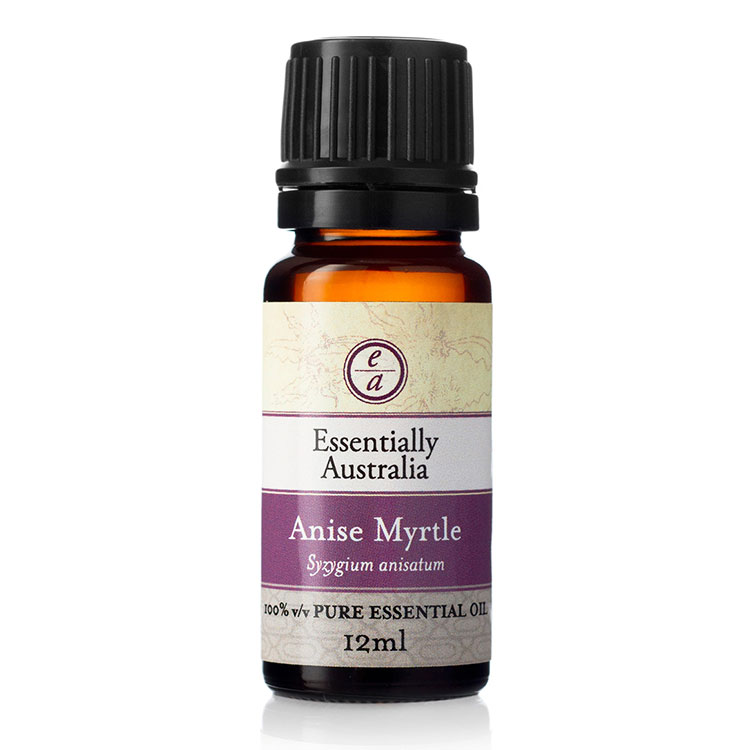
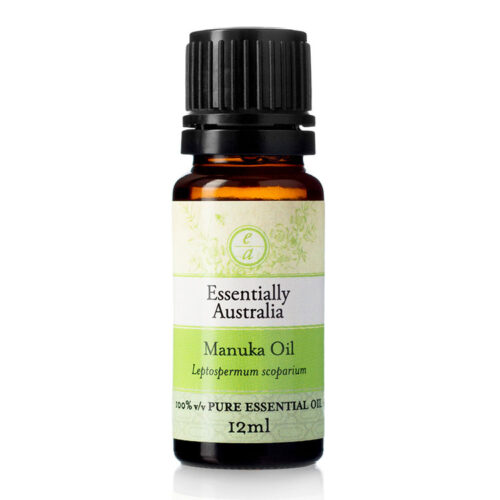
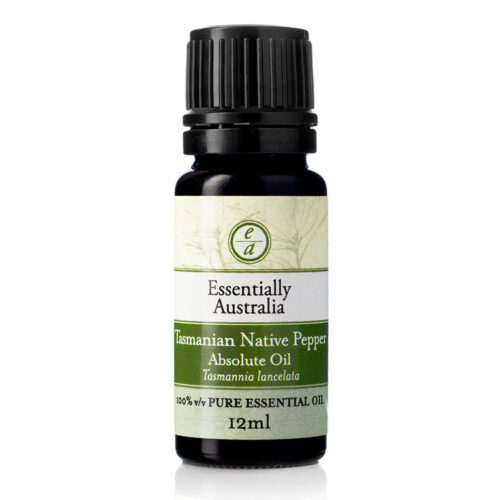
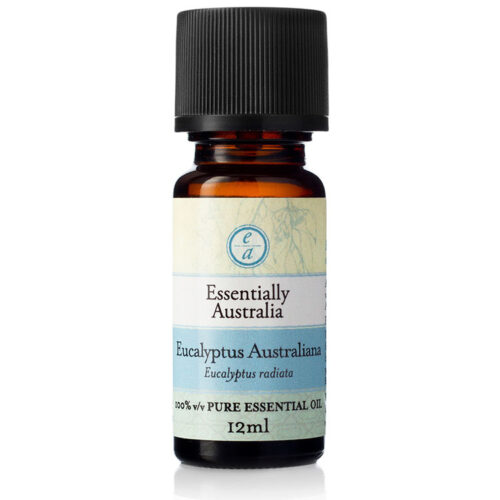
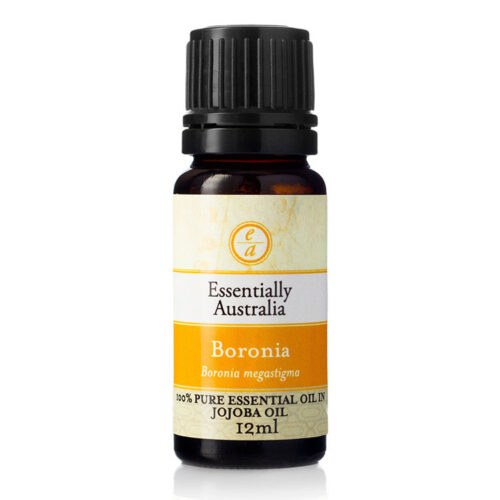
Lovely
Thanks Helen!
I use my essential oils in yoga classes and this is a favourite and touches everyone’s heart as they walk into the room. It is part of my heart chakra blend for Marma Therapy.
Smells nice